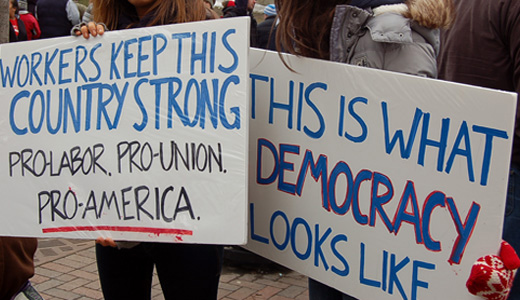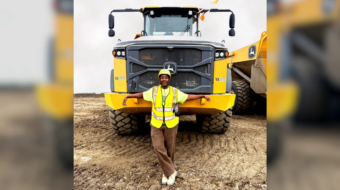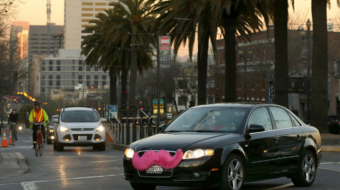
The following is from the Communist Party USA convention discussion website. David Mirtz is a member from the Bronx, labor and community activist. Under the slogan, “People and nature before profit,” the CPUSA held its convention in Chicago, June 13-15. It was live streamed and recently broadcast on C-Span. Peoplesworld.org will continue to provide CPUSA coverage and repost discussion articles. Join the continuing conversation on theory, politics and culture at peoplesworld.org, Twitter #cpusa95 or Facebook.
“Experience has further demonstrated that certain practices by some labor organizations, their officers, and members have the intent or the necessary effect of burdening or obstructing commerce by preventing the free flow of goods in such commerce through strikes and other forms of industrial unrest or through concerted activities which impair the interests of the public in the free flow of such commerce. The elimination of such practices is a necessary condition to the assurance of the rights herein guaranteed.”
The above quote is from the National Labor Relations Act of 1935. It ensured the right of workers to organize and collective bargain not as an end in itself, but to “eliminate the causes of certain substantial obstructions to the free flow of commerce” The Act represented the beginning of a new phase in the American labor movement.
The NLRA was a response to a 50-year period of significant labor unrest. This unrest was not limited to union members, which, usually fluctuated around 10 percent, but reflected the influence of Labor despite its size, the stage of capitalist development and the surge of socialist-led movements over the previous decades. The most notable, The Paris Commune of 1871, the Great Upheaval of 1877 in the U.S., the 1917 Russian revolution and the crushed German revolution of 1918.
The NLRA, precipitated the growth of unions to their highest levels in the 1950’s, but it restricted labors ability to strike, boycott and take other industrial actions. It institutionalized the Capital/Labor struggle into a legal framework, and while granting labor some significant rights, by codifying the primacy of the “free flow of commerce” was clearly on Capital’s terms. The naked violence of Capital of the previous era, which could at least be matched in the streets and factories by organized workers, was replaced by one where Capital, with its army of lawyers, lobbyists, politicians and funds, is clearly the greater power.
In response to massive union growth and waves of strikes after WWII, Congress passed the Taft – Hartley Act of 1947. The Act outlawed sympathy strikes and boycotts, perhaps the most effective tools in Labor’s arsenal and required union officials to state they were not members of any ‘subversive’ organizations. Taft-Hartley was a direct assault on Labor, aimed at the heart of Labor’s power and militancy. Laws since have restricted Labor’s ability to express its most fundamental identity and its most potent weapon, collective action, worker solidarity. Along with later concession by Labor, is it any wonder Labor’s power has eroded over time?
The framing document notes the recent upsurge in the broad labor movement and changes within the AFL-CIO but will these developments be enough to turn the tide for Labor? By themselves it’s questionable, but they have that potential. What must be done to help ensure this process? One correct assumption is that a bigger Labor movement is needed. Bigger is better to be sure, but a deeper answer is needed, especially since trying to grow, is what Labor has been attempting for the last 20 or so years. Organizing shouldn’t be downplayed or abandoned, but organizing alone will not be enough. Labor must find ways to reassert the heart of its identity – the right of working people to directly come together in acts of solidarity with each other. It’s impossible to think about the development of class consciousness and the transformation of the working class into a class ‘for itself’ otherwise. Can we really conceive of a revived labor movement restricted by the rights of the “free flow of goods” or accepting the social relations dictated by capitalism? Our task is to expose that central contradiction and give it concrete meaning. The right of the ‘free flow of commerce’ must not trump the right, legal or not, of working people to act collectively in their interests.
Another correct assumption is the need for Labor’s increased political independence. Labor’s growing embrace of political action has, and can, motivate millions to participate in politics in a new way. Focused on concrete issues and campaigns, it can tip the balance of power on the city, state and even national level. But is political independence enough? Certainly it is an important and decisive step, but only if it is tied to involvement in the broad democratic struggles of the day and is a part of Labor becoming a broad, transformational force in society. In Marx’s words writing on trade unions in 1866 “They must convince the world at large that their efforts, far from being narrow and selfish, aim at the emancipation of the downtrodden millions.”
Corporate America constantly seeks to expand its control over everyday life. Democracy is under attack because its stands in the way of its relentless pursuit of profit. Only by being deeply involved in today’s democratic struggles, not just those immediately related to Labor, can the Labor movement engage its existing members and win over broader sections of working people to its side.
Finally, the framing document points out the role of Communists and the left in the labor movement, and asks, “how can we better move the whole party into the day-to-day struggles of the labor movement?” But the question needs to be broadened. What is needed is not just to move the party into the day-to-day struggles of Labor, but how can we help move Labor into the broad democratic struggles of the day. This means being involved not only inside the labor movement but also outside, in other social movements, arguing for the role and issues of working people in these fights.
The private appropriation of socially produced wealth is capitalism’s central mechanism. Today’s social movements including Labor may be a long way from embracing socialism but many are open to people-oriented solutions that question Capital’s ability to appropriate that wealth and restrict working people’s power. Our slogan “People and Nature before Profits” must be more than agitational it must become program and policy – proposals that seek to restrict the power of capitalism and advance solutions that address its systemic crisis – its increasing inability to address human needs, both basic and spiritual.
Important as it is to make our case to labor leaders, both traditional and new, more, is our role on a grassroots level raising the political education of working people that is on a disturbingly low level. Are we not engaged in a struggle for the hearts and minds of working people? Can we rely on the Labor movement alone to do it? Unfortunately not. Education will not be successful solely based on the their economic struggles and experiences. While difficult, workers often instinctively know where their basic economic interests are. More challenging is convincing working people where their political, their class interests lie. In particular among white workers who often remain the most backward sections of our class.
It is a profound challenge, but it must be met if we are to meet today’s demands. As Lenin noted in “What is to be Done”:
“[I]t is possible to ‘raise the activity of the working masses’ only when this activity is not restricted to political agitation on an economic basis.
“The consciousness of the working masses cannot be genuine class-consciousness, unless the workers learn, from concrete and above all from topical, political facts and events to observe every other social class in all its manifestations of its intellectual, ethical, and political life; …the self knowledge of the working class is indissolubly bound up, … with the practical, understanding of the relationship between all the various classes of modern society, acquired through the experience of political life.”
We are involved in this process, but it must be greatly strengthened. We are a small party with very limited resources. The People’s World is our most consistent tool in this respect and we must find ways to expand its coverage of struggles big and small; to broaden its readership as well as those writing for the website; to deepen its analytical character in order to help its readers understand developments taking place around them.
We must engage the people we are involved with in these struggles and in our daily lives. How can we together develop a better understanding of events taking place and what can we do based on this understanding? If our goal is to engage in this activity just to get people to join the party, we are missing the point. The point is to get working people to understand and act in their class interests. Some will join the party if we ask them, most will not. But even those who do not, will shape the thinking of those around them, and view the party as an invaluable resource in helping them understand and act in the world.
Photo: Madison, Wis., March 2011. John Bachtell/PW










